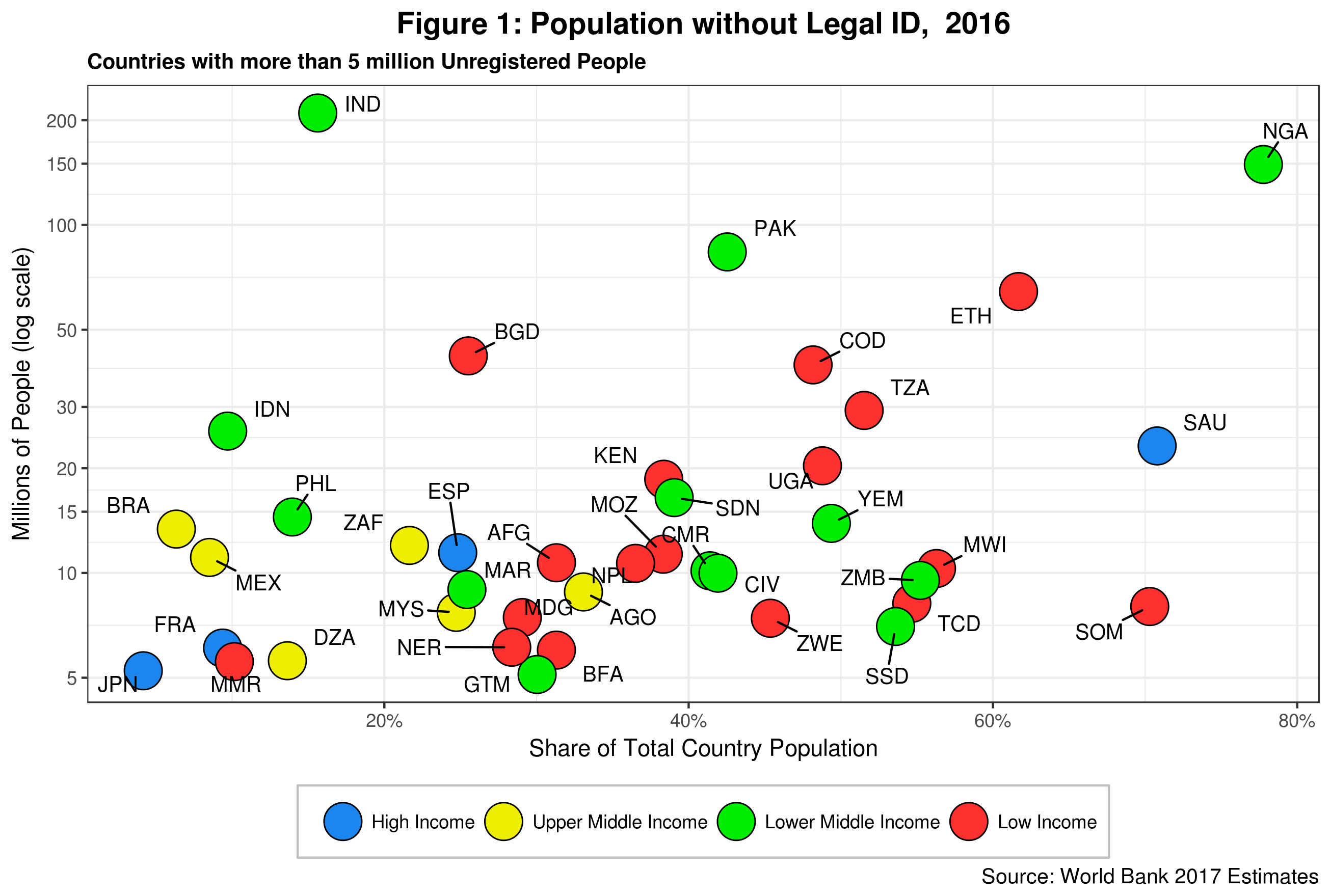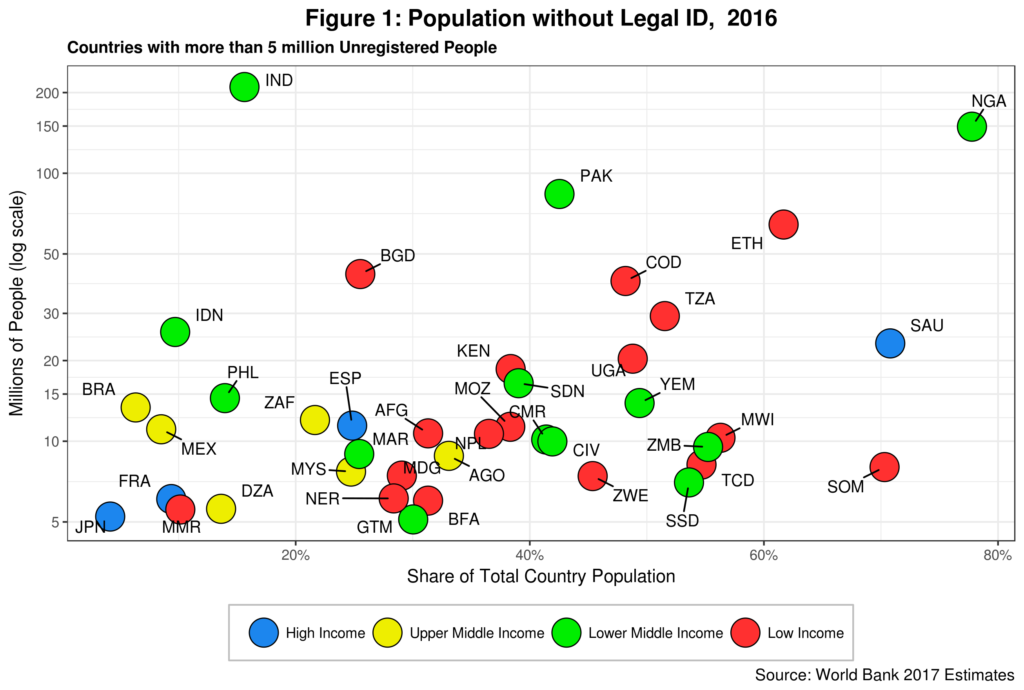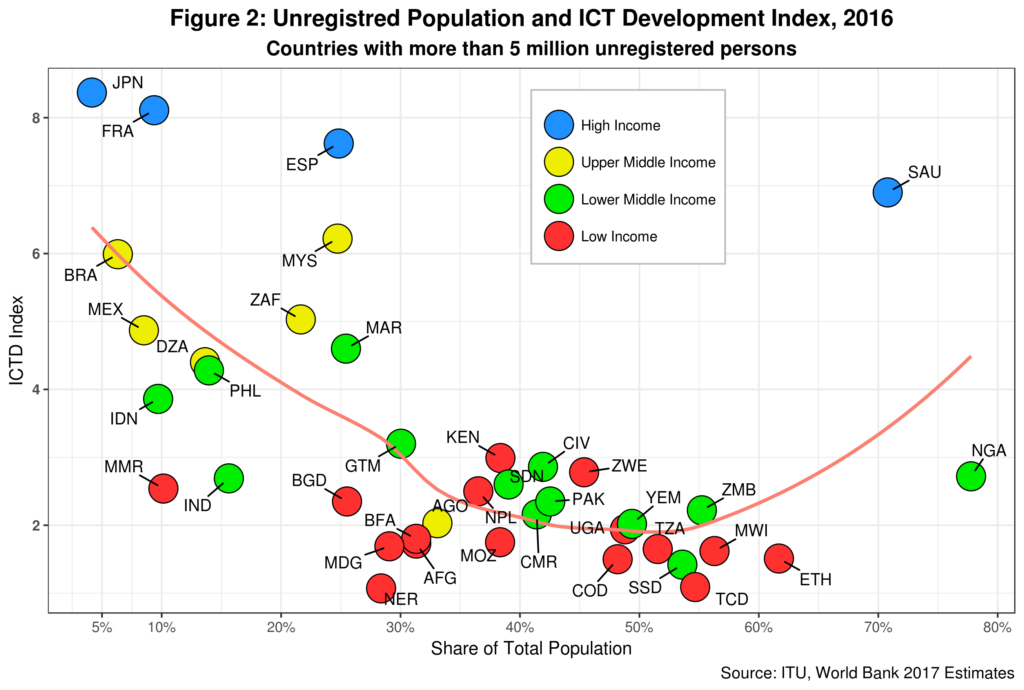Identity access and management (IAM) is perhaps one of the areas where Blockchain Technology (BCT) could make a real difference. Research I am currently undertaken indicates that over one hundred BCT startups around the globe are focusing on this area. Add to this number the many other startups and organizations who have been engaged with digital identity for many years now but do not use BCT.1 See this report by OneWorld Identity for details and examples.
Also, factor in target 16.9 of the UN Sustainable Development Goals (SDGs) that explicitly calls for universal legal identity provision, including birth registration for all children around the globe.2 Links to other SDG targets are listed here. The ID2020 global public-private partnership is now spearheading these efforts.
IAM is a well-established field that has already experienced some degree of disruption thanks to the emergence of the Internet and digital technologies.3 See for example this paper: https://www.cgdev.org/publication/identification-development-biometrics-revolution-working-paper-315. The question now is the role BCT could play in accelerating such disruption if any.
Legal Identity
Legal identity is the primary target of the SDGs as well as that of many other initiatives.4 Defining legal identity could be a complicated task. See this set of papers for an overview. Back in 2015 when the SDGs where still being baked in the UN political ovens, the standard number quoted for people without legal ID was 2.4 billion – including unregistered children and refugees. The latest World Bank global ID dataset released in June this year with the support of the Identification for Development (ID4D) programme shows that by the end of 2016 1.1 billion people had no legal ID.5 Excluding refugees which according to latest UNHCR data amount to less than 25 million people. I am not sure if the 1.3 billion difference between 2015 and now means a net gain in legal ID or a statistical discrepancy – or a combination of both.
Being that as it may, let us take a closer look at the data to determine the location of the 1.1 billion people lacking legal ID. Figure 1 shows their distribution by country and income levels, comparing relative to absolute numbers.
Here is a summary of some of the facts shown in the graph:
- In absolute terms, India accounts for almost 19% of the total number of people without legal ID. Note that India’s Aadhaar ID program claims it has registered 99% of the population over 18 years old.
- Five countries -India, Nigeria, Pakistan, Ethiopia and Bangladesh- account for 49% of the total number of people lacking legal ID. Note that at least three of these countries are already running national ID programmes using digital technologies.
- In relative terms, Nigeria takes the top spot with 78% of its population lacking legal ID. Saudi Arabia, Somalia, Ethiopia, and Malawi are right behind.
- Six middle-income countries are included, but only Angola has more than 30% unregistered people.
- Four high-income countries made the cut. In addition to Saudi Arabia that only has 30% of its population registered, Spain is an unexpected leader in Western Europe with almost 25% of its population lacking legal ID.
- Overall, lower middle income and low-income countries are the locations where most people without legal ID live. There is thus a positive correlation between lack of legal ID and low levels of human development. But outliers do exist and are noticeable.
In principle, these data estimates should serve as guidance to establishing priorities when it comes to launching new ID programmes or deploying new technologies on the ground.
Digital Development and Legal ID
As mentioned above, digital technologies are increasingly being used to tackle legal ID gaps. Perhaps the best example is India’s national ID program. SInce 2009, ITU has been publishing the ICT Development Index (IDI) which measures the level digital development within a given country. Note that the index emphasizes infrastructure and access thus ignoring areas such as policy and institutional development. Nevertheless, we can use it as a good proxy for national ICT diffusion and penetration.
Figure 2 shows the relationship between the number of people with no legal ID and the level of national IDI. A polynomial trend line is also included to show the non-linear character of such relationship.
While there is a clear positive correlation between income levels and ICT development (higher income -> higher IDI), the same cannot be said for the association between legal ID and IDI. This is undoubtedly the case for lower middle income and low-income countries where IDI scores are relatively small across the board. For these group of countries, high IDI does not translate into a reduced number of people lacking legal ID.
For example, while Nigeria has a relatively high IDI it is also the leader when it comes to unregistered people. On the other side, Myanmar also has a relatively high IDI but ranks low regarding people with no legal ID in spite of being a low-income country. 6 The Rohingya humanitarian crisis might have a negative impact on these numbers.
All in all, simple data analytics should furnish technologists and innovators with adequate evidence to design new ID programmes that tackle some of the glaring ID gaps that still persist out there. A solutions-looking-for-problems approach is thus not the best path to take. On the contrary, ample gaps exist and are demanding new approaches to be successfully tackled and eventually closed in the medium term.
But can BCT play a role in closing the legal ID gap? Perhaps. But so far not much is being done in this area by BCT innovators and practitioners.
Cheers, Raúl
Endnotes
| ⇧1 | See this report by OneWorld Identity for details and examples. |
|---|---|
| ⇧2 | Links to other SDG targets are listed here. |
| ⇧3 | See for example this paper: https://www.cgdev.org/publication/identification-development-biometrics-revolution-working-paper-315. |
| ⇧4 | Defining legal identity could be a complicated task. See this set of papers for an overview. |
| ⇧5 | Excluding refugees which according to latest UNHCR data amount to less than 25 million people. |
| ⇧6 | The Rohingya humanitarian crisis might have a negative impact on these numbers. |




Comments
One response to “Identifying the Unidentified”